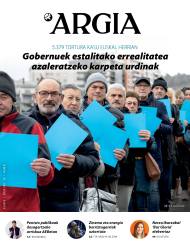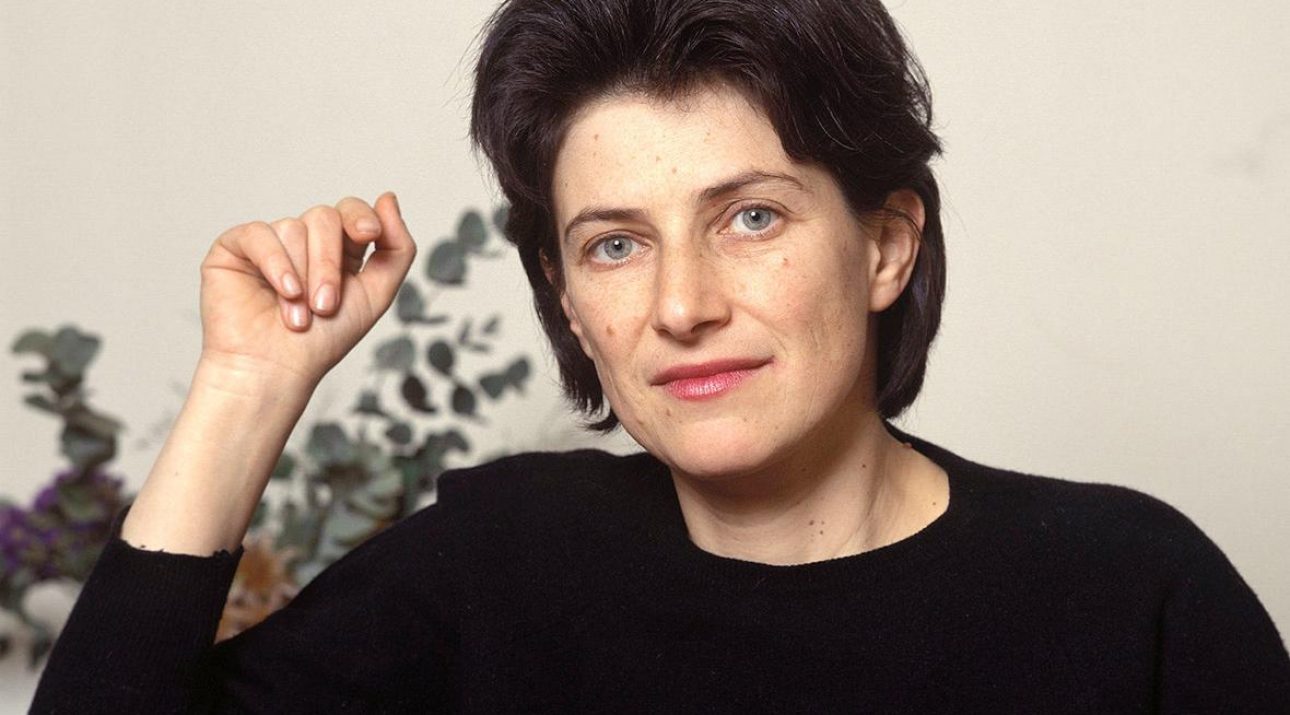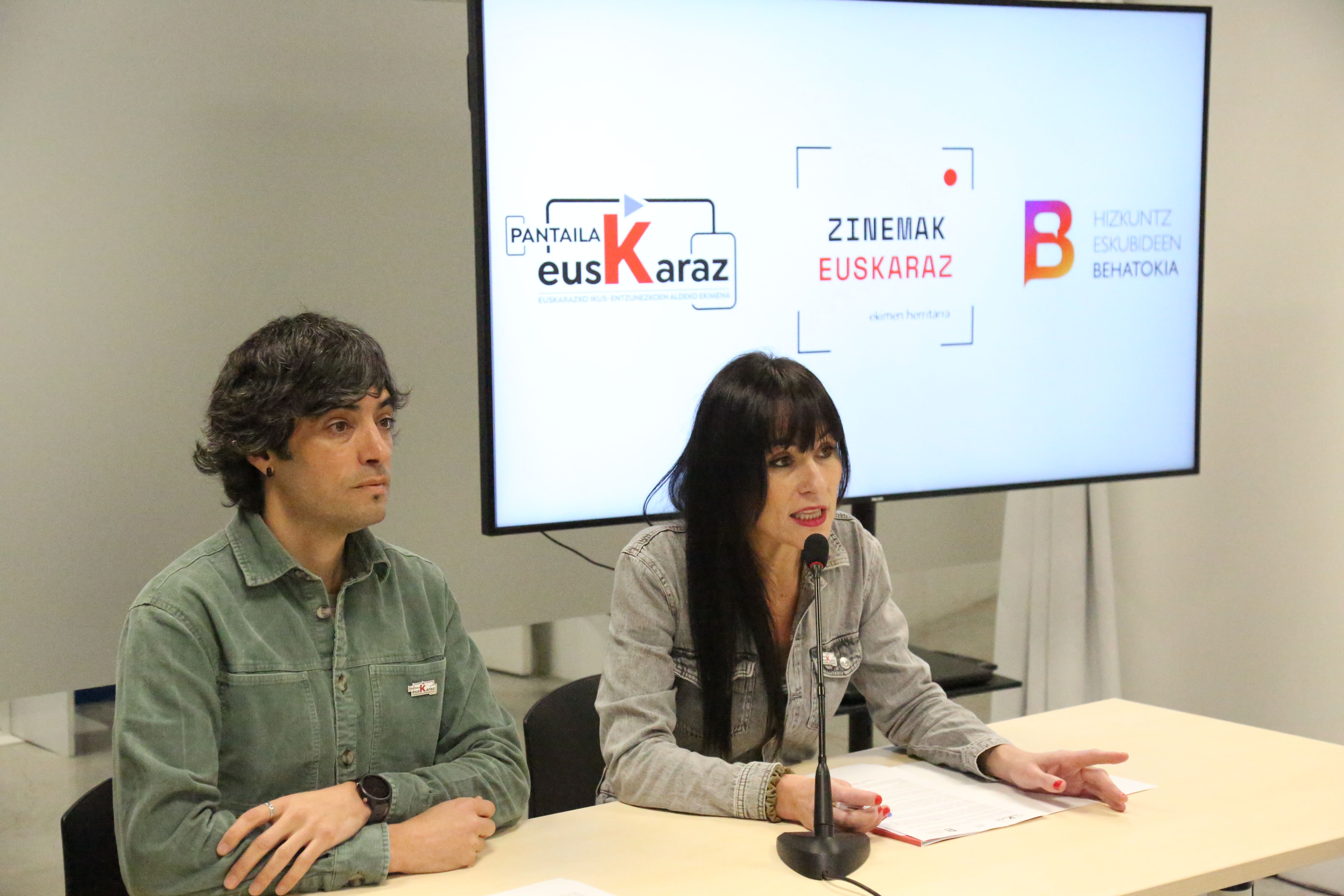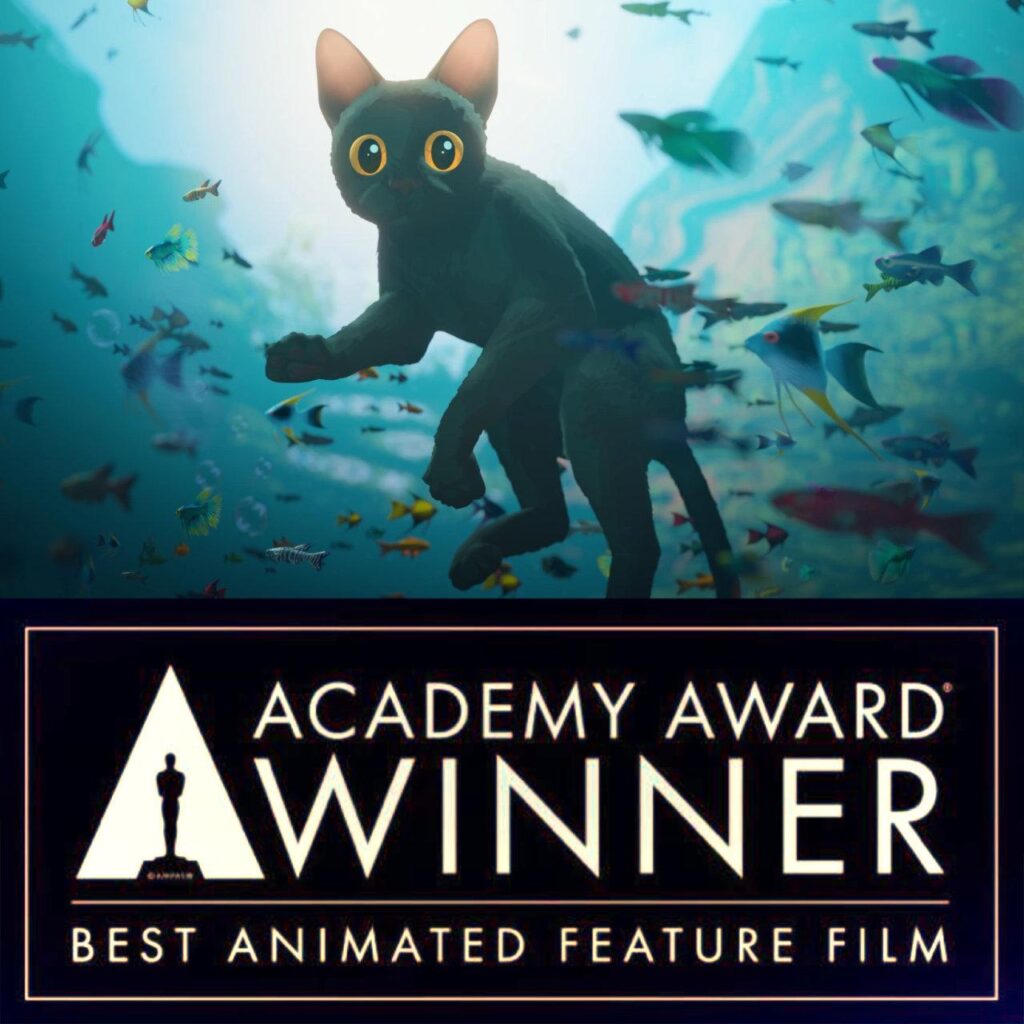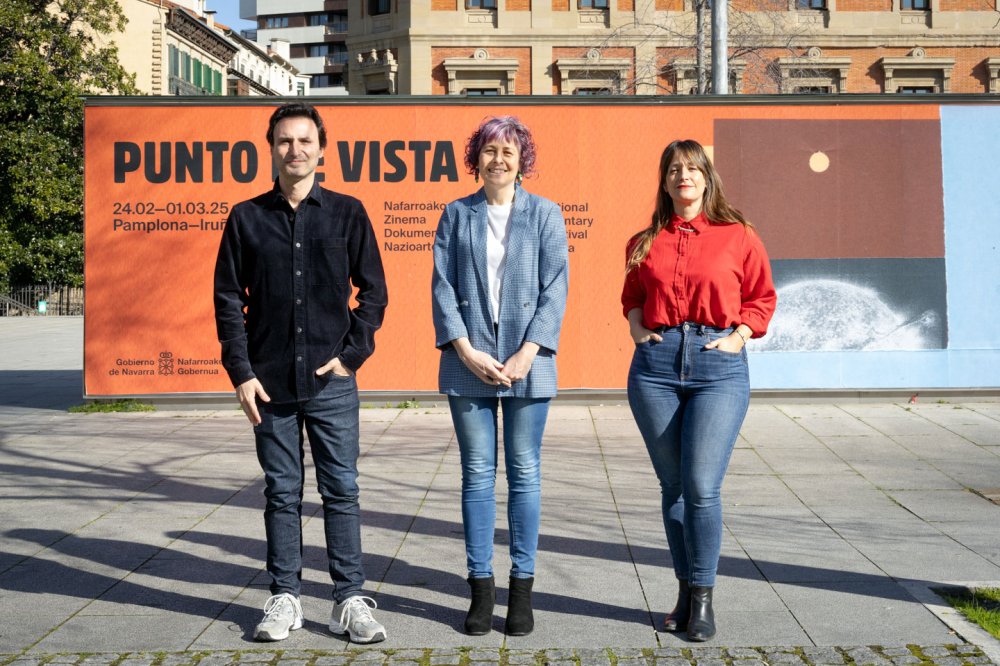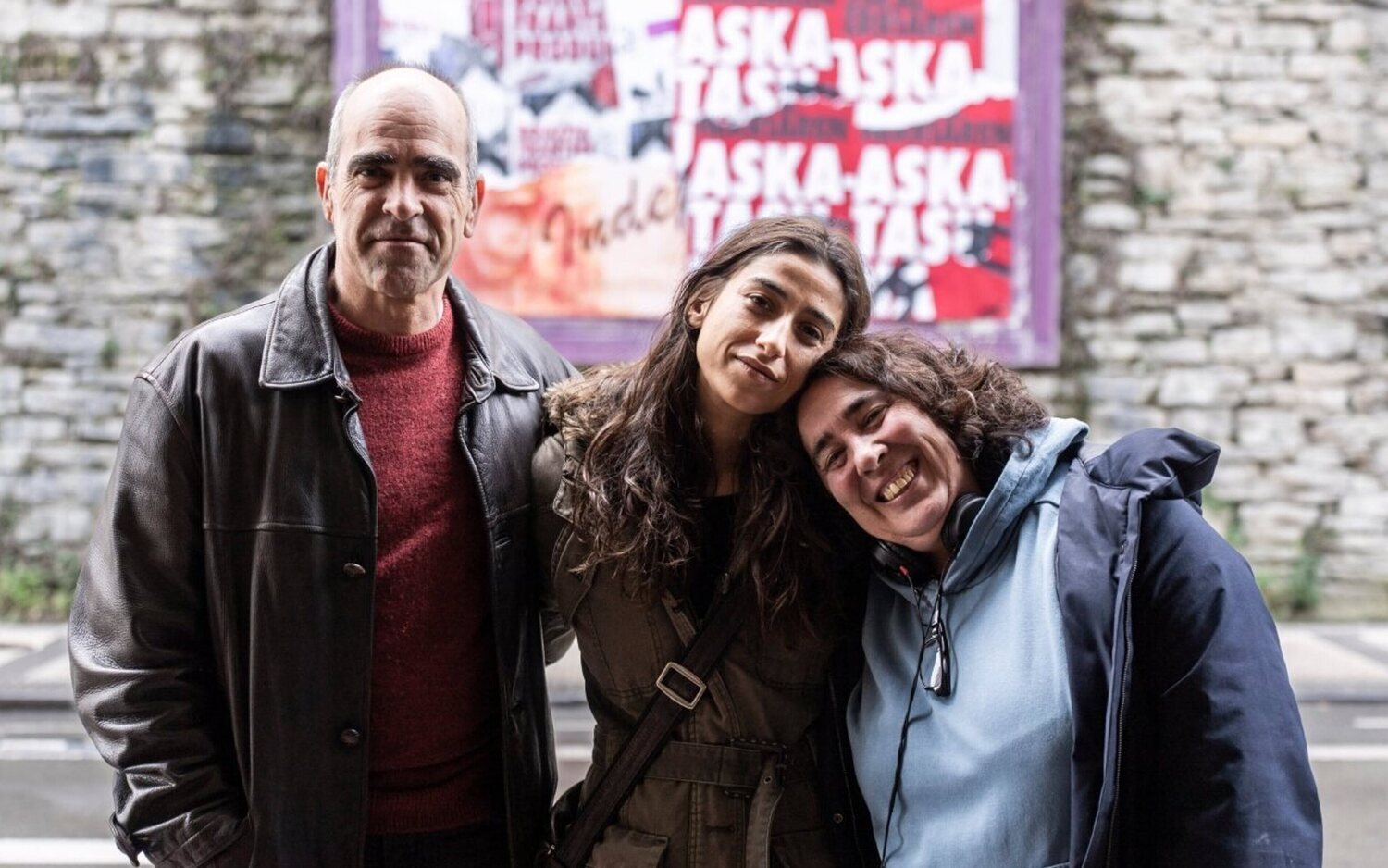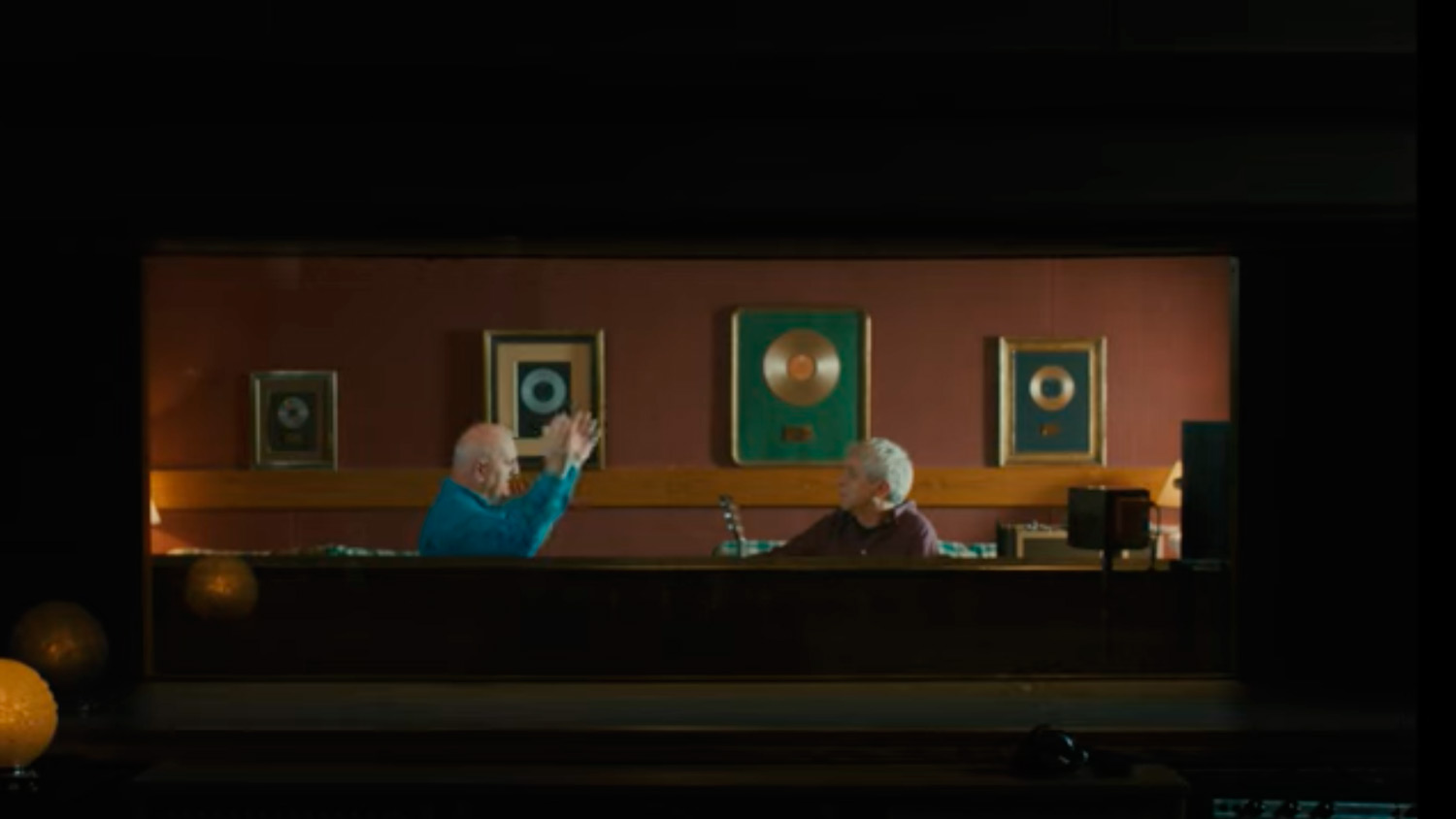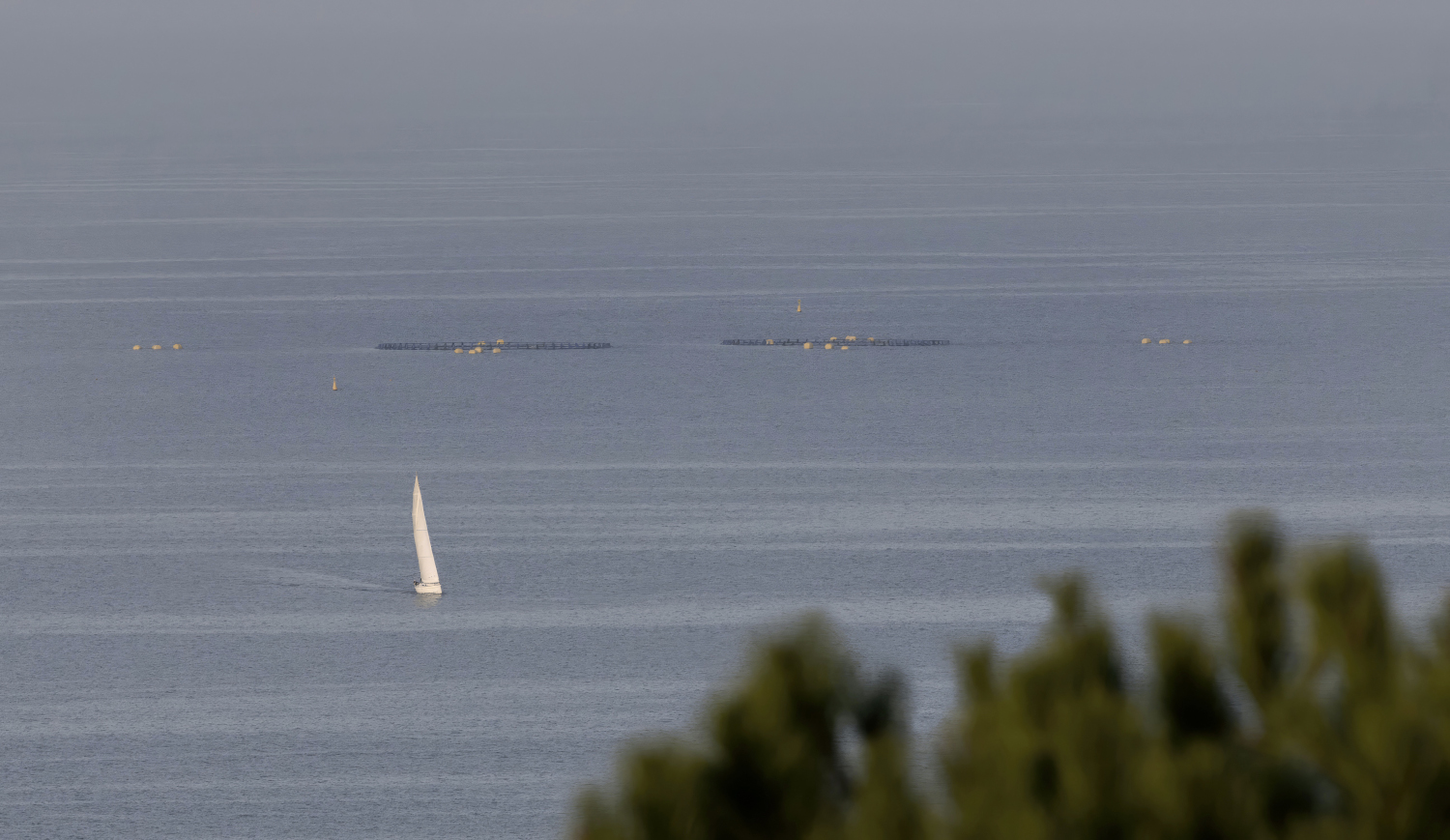Energy dilemmas within the Urumea River
- Ainhoa Gutiérrez del Pozo and Eli Pagola Apezetxea live by the river. From the curiosity about hydroelectric power plants is preparing an artistic experience that combines research and film, thanks to the Hernani Creativity Grant, in which it is intended to bring together data on the potential of the hydroelectric power plants of the Urumea River and the most significant impacts of this renewable energy on river biodiversity. From a few steps, different pieces are being created to propose a reflection.
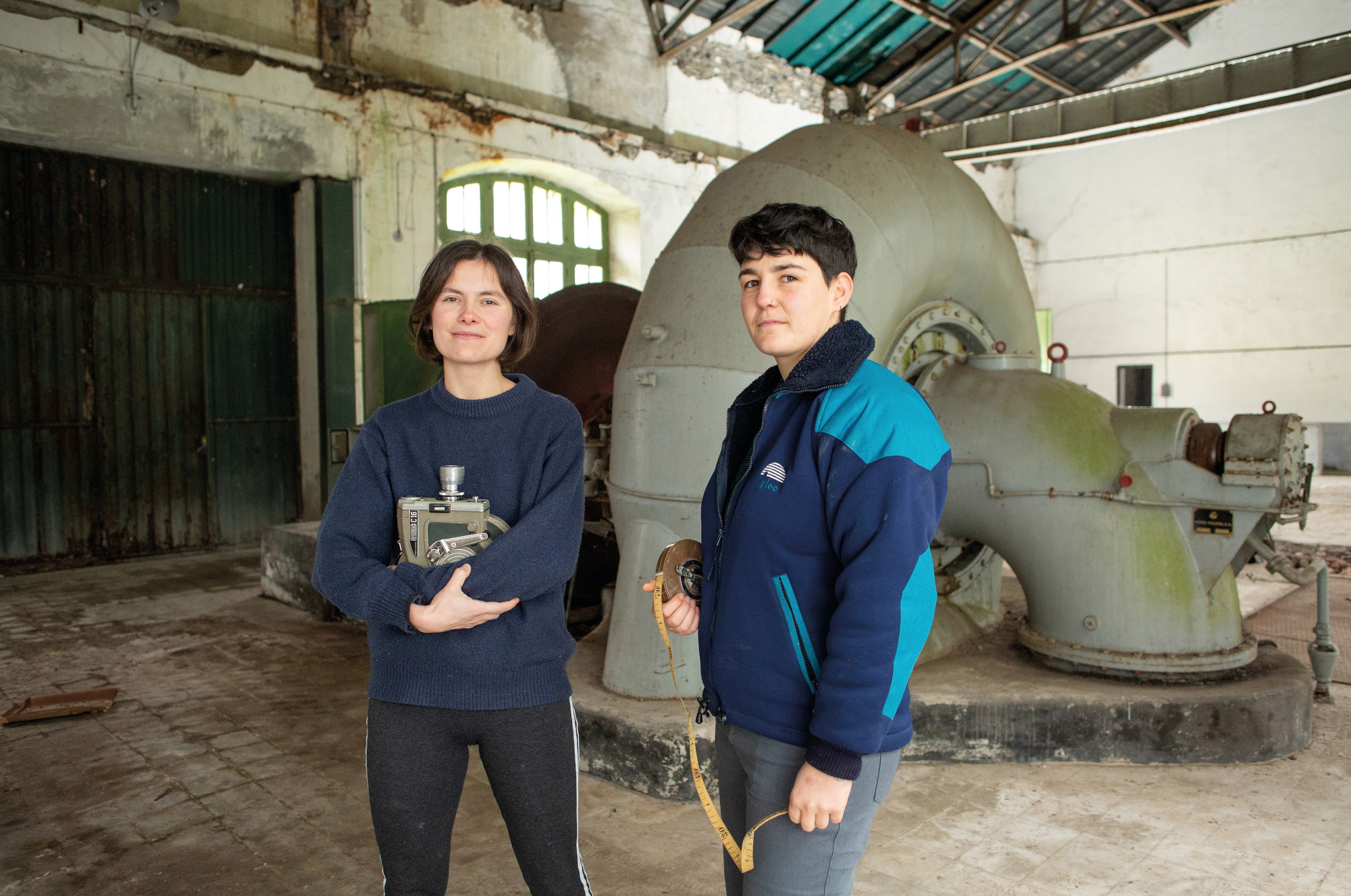
Eli Pagola Apezetxea and Ainhoa Gutiérrez del Pozo, neighbours of Ereñotzu, have entered the Urumea River. The first had knowledge of renewable energies and the valley, the artist's gaze and a camera shot in 16 mm. They form hybrid research. They have visited the hydroelectric plants, from the Hernani bin to the ones in the lands of Leitza, they have seen which are in operation and which are abandoned, and among them they have extracted calculations that could generate electricity. And they ask, what influence do hydroelectric dams have on the river? To what extent do fish have restricted freedom of movement in the river? What is the damage to biodiversity?... At the same time, the changes that have taken place in the following structures have been filmed: in summer the dams are a bathing site, in winter they are powerful turbine gyrders, in some hydroelectric plants people live or other uses are used...
Based on research so far, an experience is being prepared that would allow them to access a hydroelectric power plant. Work is now being done on the preparation of an installation that brings in contact with the threads and analyses performed, the file collected and the pieces found. On the other hand, the exhibition will remain open from April 17th to 24th at the House of Culture of Hernani. This week the authors will make a special projection explaining the process. They then want to open the door to popular presentations.
This work that brings together research and cinema intends to share among citizens the possibilities of energy generation and reflections on its impacts. They want to put on the table the ingredients for reflection on the subject of renewable energies today in the pil. The approach developed by the two creators throughout this work has been rounded down by Gutiérrez: “The environment is seen as a resource for human exploitation, and from there comes everything. If we continue to see the environment as a way of bringing things out for our benefit, we will continue to have an impact. The key is to think about what responsibility we have to assume in this impact.” It launches a valid question for all renewables: “No impact. So to what extent do we have legitimacy to make an impact?”

Why a 16-mm camera?
According to Ainhoa Gutiérrez, “we think to roll in 16 mm, because it is a work on light and because in the analogue camera light is printed directly on the film. So, we saw the connection between the subject and rotate it like this. On the other hand, the camera does not need electricity at the time of recording, it is hooked.” With today’s digital cameras, it’s common to accumulate hours of recording and see what is recorded at the moment. On the contrary, Gutiérrez explained that this analogue camera sets out its conditions: “We can’t record everything we want, so before we had to investigate and decide where to target the films we had. It forces us to know things.” With this camera, the multiple uses of the Urumea River have been documented in images without a voice, a short piece that will be projected during the performance.
Eli Pagola has pointed out that the choice also has to do with time: the aesthetics of the image brings us closer to a time. You know, if you didn't win the Hernani creation grant, you couldn't use this expensive recording system.
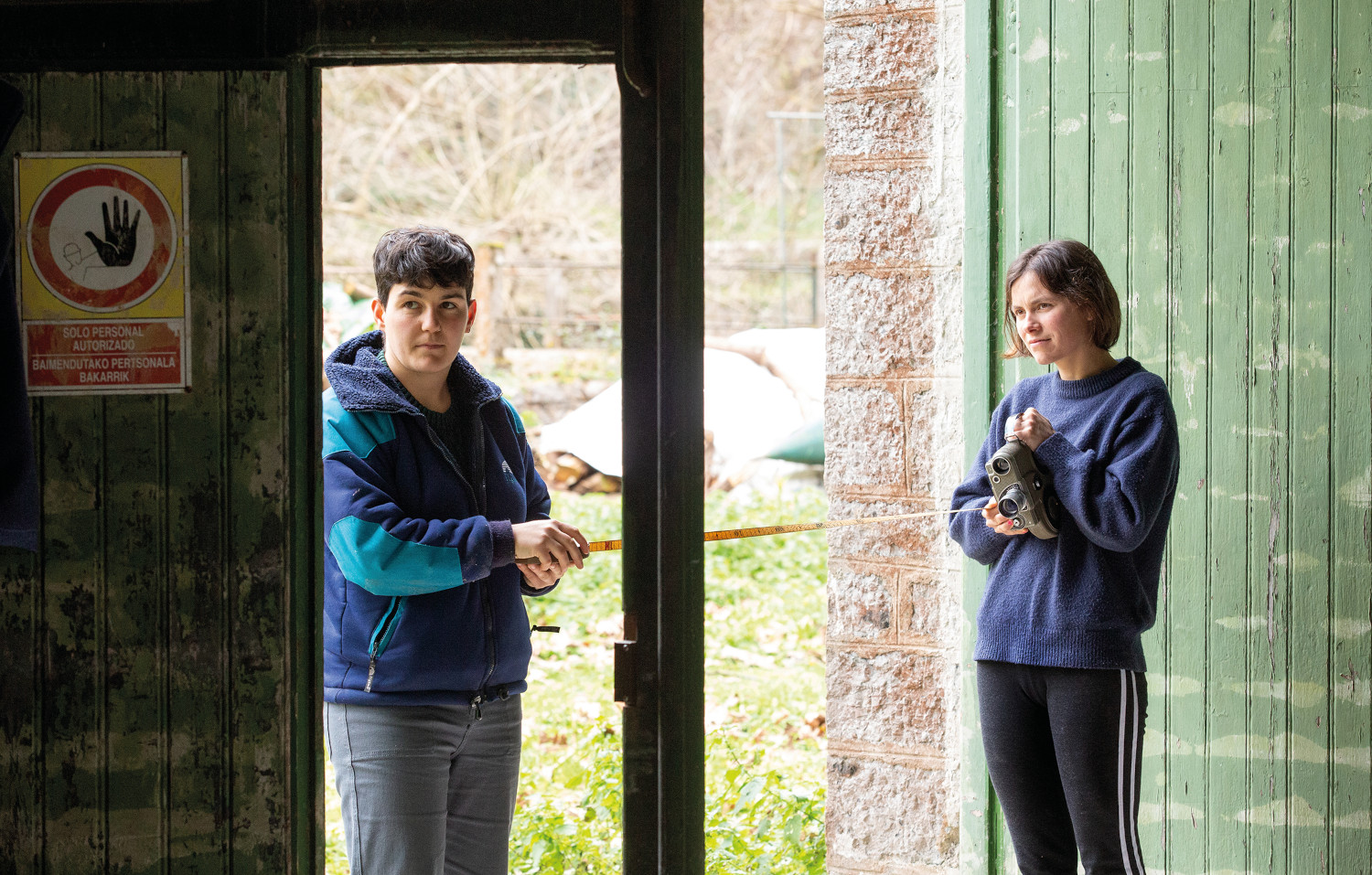
Exploring the nuances of “green” energies
Pagola describes the second leg of the work, that of engineering: “In general, most renewables have some nuances in this ‘green’ character: in this case, the extraction of energy from the river requires constructions that have an impact on the environment. There's a clash. In this work we have analyzed, on the one hand, the amount of energy generated in the valley, the amount that could be generated taking into account the installations that are not in operation, the proportion of electrical energy consumed in the valley (Hernani, Ereñotzu, Arano, Goizueta) that could be supplied with that amount of electrical energy... and, on the other hand, we have put it in dialogue with the impact that For this we have worked the fish scales.”
What is the fish scale? Pagola explained that “where there is a plant there is almost always a prey that hinders the migration of fish. To compensate a little bit for this, you build scales of fish, some structures for the passage of fish, but of course, it's not the same to have the whole free-flowing river than to have a scale or a small path. The prey will always be a barrier to fish. These scales must have specific characteristics to be more effective. But they are not always made as the environment demands, many variables are not taken into account and, consequently, often do not perform their function properly. We have done a calculation: by analyzing the number of existing scales and the situations in which they are found, we have brought to numbers the extent to which they allow the flow of fish.”
Gutierrez acknowledged that “when we started this work we already knew that power plants can supply electricity, but we did not know the damage this entails.” Militants of the ecologist group Eguzki have been interviewed to do the work, the expert forestry engineer at fish scales Pao Fernández Garrido, the workers of the power plants, the forest guards, the Hernani archive, the citizens with knowledge of the subject in the valley... They have talked about the closeness of carrying out fieldwork in the area where one lives: “People place you easily, which increases confidence. In addition, we were also part of the experience and looking for it.” This proximity has led them to get to know the key people of the project, including Xabier Etxegia. He started working in the first central of the valley and has known many plants of the Urumea River. He is currently a worker at the
Rezola de Goizueta plant. Energy generation and impact data shall be provided in the exposure. Pagola: “To do this, Haritik Hirira geographers have created different maps. There you can see where the plants are, which ones are working and which ones are not, how many energies have been designed to generate each one of them, where their channels go...”. “We’re going to put these data on the table for dialogue and debate,” Pagola continued: “It’s not enough to say ‘there is energy’, yes, but how much is generated and what does many GW mean?” Gutiérrez has taken the floor: “Our energy consumption is not just electricity, so it is not easy to say whether the hydroelectric power can satisfy consumption. And I don't know if what we're looking for is to satisfy current energy consumption, or think about how to live with what it would be. It is true that you can leave far more than we thought.” Pagola: “We are going to publish some data and some readings, but we are not able to say whether the energy that would be generated is enough or not. There is another trap: many of the plants here are from Acciona, from Iberdrola… Energy is generated here, it will certainly be consumed here, but property and profits are somewhere else.”

Art at the center
Since the project was drafted, they had the interest of performing the representation within a hydroelectric power plant. Gutiérrez explained that “places of art are usually cities and urban centers and we wanted to move them elsewhere. In addition, many people who live here probably have never entered a power station and we were looking for that experience. This has brought us a series of reflections on the extent to which when we create a piece it is possible to locate it everywhere, or what relationship there is between space and the piece… We are now landing our pieces”. Pagola added: “This exhibition will be mostly an experience. There will be many elements in contact, some established by us and others present. We're going to put the piece of film that we've been recording all summer, but if somebody's going to go to the turbine that's got their eye nearby, we don't care. It’s also a way to see our project.”
What are the power plants inside? In Pagola’s words, “they are old (most of around 1920), they have a vintage tile, big crystals… However, there are very different plants, it influences a lot on the water jump, on the type of turbine and in the year it was built.” Gutierrez added that “they have stone walls and it is curious, most have church rosettes. They're fascinating, we're not used to seeing such a big machine. Many are abandoned and give the mark of another life...”.
Strange discoveries have been made in the plants, as Gutiérrez explained: “Inside the Rezola de Goizueta plant there is painted a mural showing the maps of its channels and the origin of the water. It is functional for the work but at the same time it is a mural and attractive from the artistic point of view”. Pagola has followed the story: “As the house told us, the idea of the company was to clean that mural and paint the wall white. She asked him to repaint that image, because for him he was part of the center. They accepted it and when they started cleaning they saw the image painted underneath. That is, it is a wall painted over and over again and three times has been requested by the guards of the time to keep that drawing.”
Another finding occurred at Pikoaga Central, according to Gutiérrez: “We discovered some slides from the 1980s with explanations about energy. They are conceptions of another era, such as the peak of oil expected in the year 2000... these now projected slides give rise to a new meaning.”
Anyone who wants to know first-hand the discoveries and conclusions of both authors and wants to clarify the mind through art can do so in the Urumea, in the issue “Ta argiya iñan”.
Donostiako Tabakaleran, beste urte batez, hitza eta irudia elkar nahasi eta lotu dituzte Zinea eta literatura jardunaldietan. Aurten, Chantal Akerman zinegile belgikarraren obra izan dute aztergai; haren film bana hautatu eta aztertu dute Itxaro Bordak, Karmele Jaiok eta Danele... [+]
35 film aurkeztu dira lehiaketara eta zortzi aukeratu dituzte ikusgai egoteko Euskal Herriko 51 udalerritan. Euskarazko lanak egiten dituzten sortzaileak eta haiek ekoitzitako film laburrak ezagutaraztea da helburua. Taupa mugimenduak antolatzen du ekimena.
Pantailak Euskarazek eta Hizkuntz Eskubideen Behatokiak aurkeztu dituzte datu "kezkagarriak". Euskaraz eskaini diren estreinaldi kopurua ez dela %1,6ra iritsi ondorioztatu dute. Erakunde publikoei eskatu diete "herritar guztien hizkuntza eskubideak" zinemetan ere... [+]
Geroz eta ekoizpen gehiagok baliatzen dituzte teknologia berriak, izan plano orokor eta jendetsuak figurante bidez egitea aurrezteko, izan efektu bereziak are azkarrago egiteko. Azken urtean, dena den, Euskal Herriko zine-aretoak gehien bete dituztenetako bi pelikulek adimen... [+]
Otsailaren 24tik eta martxoaren 1era bitartean, astebetez 60 lan proiektatuko dituzte Punto de Vista zinema dokumentalaren jaialdian. Hamar film luze eta zazpi labur lehiatuko dira Sail Ofizialean; tartean mundu mailako lau estreinaldi eta Maddi Barber eta Marina Lameiro... [+]
A conference for architects has just been held in Madrid to discuss the crisis of the professional architect. They have distinguished the traditional and contemporary way of being an architect. What is traditional? From the epic architect who appears in The Brutalist, where... [+]
Itoiz, udako sesioak filma estreinatu dute zinema aretoetan. Juan Carlos Perez taldekidearen hitz eta doinuak biltzen ditu Larraitz Zuazo, Zuri Goikoetxea eta Ainhoa Andrakaren filmak. Haiekin mintzatu gara Metropoli Foralean.







